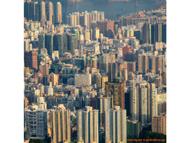15-Minute Cities (2) - ORIGINAL CONTENT
- By:
- Edward A. Reid Jr.
- Posted On:
- Jul 18, 2023 at 7:00 AM
- Category
- Climate Change
The broad concept of 15-Minute Cities is not new, though the proposed version of the future is very different from its predecessors. The earlier 15-minute cities in the United States were voluntarily established small neighborhoods distinguished by the common ethnic or religious backgrounds of their residents. Many US cities still have Italian, Irish, Polish and Slavic neighborhoods. Many large cities have a Chinatown or a Koreatown or a Little Italy. Many also have Jewish neighborhoods. Some neighborhoods, such as the Harlem neighborhood in Manhattan, grew and later divided into two neighborhoods. Some cities even have suburbs which are predominantly populated by a single ethnic or religious group.
However, the 15-minute cities being proposed as an approach to reducing anthropogenic climate change are very different. First, they would have far greater population density, leading to clusters of high-rise mixed-use buildings housing schools, retail establishments, business offices, restaurants, recreation facilities, medical and dental offices, emergency medical facilities and other service businesses. High population density is necessary to assure a customer base sufficient to support the various non-residential facilities within the city.
The proposed 15-minute cities bear some resemblance to the housing projects built in numerous US cities to provide low-income housing, many of which either started out as or later became racially segregated. However, the current emphasis on Diversity, Equity and Inclusion (DEI) should avoid racial, religious or ethnic segregation, at least by intent. Economic segregation might be far more difficult to avoid.
Developing 15-minute cities within existing major cities would be very difficult because of the diverse ownership of the existing property and infrastructure. It would also be a major exercise in “broken window economics”, removing existing functional infrastructure to replace it with higher density, mixed-use infrastructure. Redevelopment would displace current residents and businesses for several years while demolition and construction occurred. Construction would require large quantities of concrete, steel, brick and glass. Fabrication of these materials is very energy intensive and current production methods require the use of fossil fuels.
The primary climate change benefits expected from 15-minute cities are reductions in vehicle use and emissions and improved building energy efficiency. Transportation outside the 15-minute cities would be primarily by electrified public transit operating on perimeter roads.
The success of individual 15-minute cities would depend upon their geographic location, the quality and character of the specific non-residential facilities and services available within the city and the features and quality of the residential dwelling units. Cities with excellent schools and recreational facilities would be likely to attract younger couples and families. Other cities might be more attractive to 55 and older residents based on the nature of the non-residential facilities available, perhaps including assisted living functionality and more extensive medical and rehabilitation facilities.
Cities with higher end shopping and restaurants, perhaps even concierge services, would be more attractive to wealthy potential occupants and would likely lead to some degree of economic self-segregation.
The selection of a 15-minute city with the optimal combination of facilities would be more critical than the current situation, since travel out of the 15-minute city would be less convenient than is typical currently.


